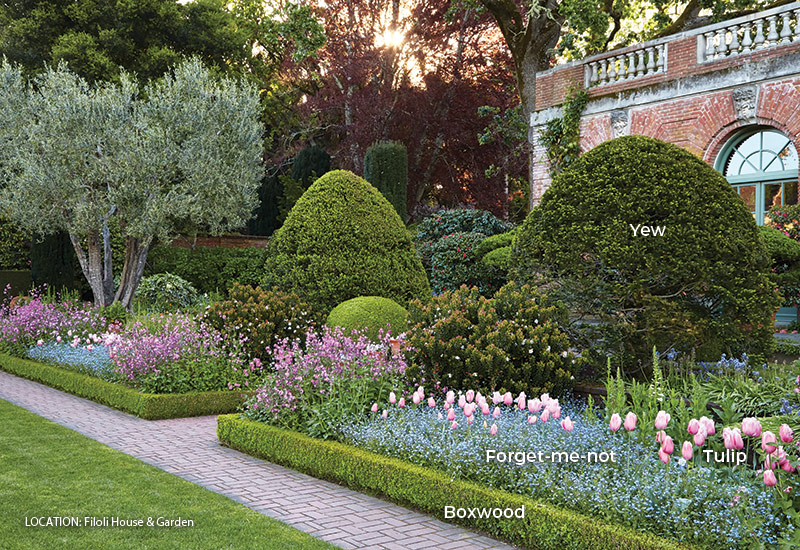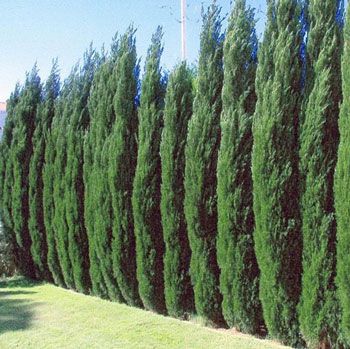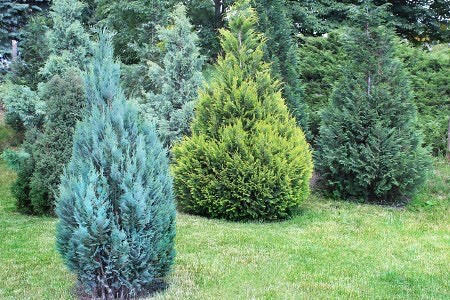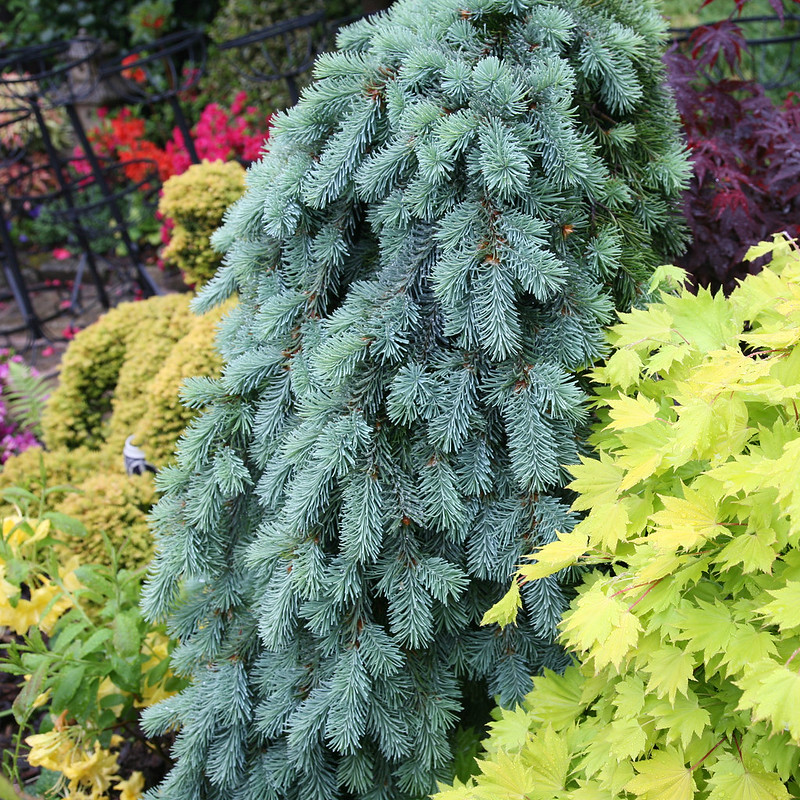Blue point juniper has a moderate growth rate of about 6 to 12 inches per year. Blue point juniper growth rate is moderate, typically growing 6 to 12 inches annually.
This versatile evergreen tree has long been popular for hedges, topiary, and specimen planting in residential and commercial landscaping. Its blue-green foliage, pyramidal shape and low maintenance needs make it an attractive option for gardeners and landscapers alike. Whether you want to create privacy, add an elegant touch to your garden, or add structure to your landscaping, the Blue Point Juniper is a reliable choice.
In this article, we will explore the blue point juniper’s growth habits, care needs, and landscaping potential to help you get the most out of this fantastic tree.

Credit: www.gardengatemagazine.com
Understanding Blue Point Juniper
Blue Point Juniper Growth Rate: Understanding Blue Point Juniper
Blue point juniper is a low-maintenance, drought-tolerant, evergreen plant popularly grown for its unique pyramid shape and stunning blue-grey foliage. If you’re looking to add this plant to your garden, you need to know the requirements for its healthy growth.
Here’s what you need to know!
Characteristics And Physical Appearance Of Blue Point Juniper
Blue point juniper’s physical appearance plays a significant role in making it a popular choice for ornamental and landscaping purposes. Below are its characteristics:
- Its pyramidal shape grows up to 12 feet in height and 6 feet in width.
- The foliage has a bluish-grey or silver-green color, which may change to a purplish color during winter.
- Its leaves are needle-like, pointed, and have a sharp texture.
- It has a horizontal branching pattern with small, brown cones.
- Blue point juniper has an excellent tolerance to salt invasion, hence a preferred choice for coastal landscapes.
Suitable Climate And Soil Conditions For Blue Point Juniper Growth
Blue point juniper grows optimally in specific climates and soil conditions. Here’s what to consider:
- Blue Point Juniper thrives in USDA hardiness zones 4 to 9.
- It loves to bask in full sunlight, but it can tolerate partial shade too.
- The soil should have perfect drainage capacity, with a pH range between 5.5 and 7.5.
- The soil should be moderately moist and not water-logged.
- It’s an adaptable species and doesn’t require a lot of irrigation.
Potential Challenges And Common Issues Faced During Blue Point Juniper Growth
Like any other plant, blue point juniper can face certain issues that you should be aware of while growing it. Here are some of the potential challenges:
- Spider mites, bagworms, and phomopsis blight are common pests and diseases that Blue Point juniper can experience.
- Powdery mildew and tip blight are also caused by fungi and ruin the plant.
- The shrub is vulnerable to natural disasters like snowfall, heavy winds, and ice storms.
Blue Point Juniper is an attractive, low-maintenance plant perfect for landscaping and ornamental purposes. Knowing the optimal climate, soil conditions, and potential challenges faced can help you maintain its growth. Happy planting!
Secrets To Maximizing Blue Point Juniper Growth
Blue point junipers are a popular evergreen shrub choice for landscapes due to their year-round visual appeal. These shrubs have a distinctive blue-green foliage, conical shape, and can reach a height of up to 12 feet. Do you want to achieve the same maximum growth rate for your blue point junipers?
Follow these secrets experienced gardeners have shared to maximize the growth of your blue point juniper.
Selecting The Right Variety Of Blue Point Juniper
Before planting any blue point juniper, you should choose the right variety based on your climate, soil type, and the desired dimensions of the mature shrub. Here are the characteristics to consider while selecting the right variety.
- Soil conditions and climate are essential in determining the blue point juniper variety to plant.
- The plant’s ultimate height, width, and rate of growth should match your preferred garden style.
- Choose the type of blue point juniper that suits your taste and garden design.
Appropriate Planting Techniques And Tips For Blue Point Juniper
Planting blue point juniper correctly ensures that the shrub takes root and grows successfully to its maximum potential. Here are the tips for planting blue point juniper
- Planting blue point junipers in early fall or early spring will ensure root establishment ample time for growth before winter.
- Prepare the planting site by digging a hole twice the size of the plant’s root ball and amending the soil with organic matter.
- Ensure the plant’s root ball has enough moisture before planting.
- Water the plant immediately after planting to aid root establishment.
Essential Care And Maintenance Practices For Blue Point Juniper
Keeping blue point junipers healthy is easy only when you follow the right care and maintenance procedures. Proper maintenance of the junipers will speed up their growth rate and keep them looking green and healthy throughout. Here are the essential care and maintenance practices for blue point juniper.
- Blue point junipers planted in their preferred soil type require little to no fertilizer.
- Prune during the late winter or early spring, which will help maintain their shape and size.
- Ensure the plant is freely branching and not overgrown.
- Water to establish and maintain healthy growth.
Time-Tested Strategies For Accelerating Blue Point Juniper Growth Rate
Do you want to see your blue point juniper grow faster? Then consider the long-term strategies of experienced gardeners to accelerate growth rates.
- Use slow-release fertilizers or compost in early fall or early spring.
- Maintain good soil moisture by watering regularly during the first two years after planting.
- Prune appropriately and evenly, allowing sunlight and water to penetrate all areas.
- Plant blue point junipers in the right conditions and within their preferred climate.
Enhancing Blue Point Juniper Landscaping
Blue point junipers are an excellent choice for adding evergreen beauty to any landscape. This plant species is a favorite of landscapers due to its unique blue-green foliage that transforms to silver-blue in winter. One of the most remarkable features of blue point junipers is their growth rate, which can exceed one foot per year.
In this section, we will delve into innovative design ideas, complementary plant options, and smart techniques for integrating lighting and water features with blue point junipers.
Innovative And Creative Design Ideas For Blue Point Juniper Landscaping
Blue point junipers can transform any landscape into an aesthetically appealing masterpiece. Here are some innovative design ideas:
- Create a blue point juniper hedge: Use multiple blue point junipers to create a hedge that will define your landscape and give it a sense of elegance and structure.
- Mixed border planting: Plant blue point junipers with contrasting evergreens, such as hinoki cypress or gold mop cypress. These plant pairings will complement each other, adding depth, texture, and contrast to your landscape.
- Blue point juniper topiary: Train blue point junipers to grow in unique shapes, such as spiral, globes or cones. These shapes will emphasize the plant’s distinctive blue-green foliage and add a focal point to your landscape.
Complementary Plant Options For Blue Point Juniper In Landscaping
The beauty of blue point junipers can be enhanced by pairing them with complementary plant options. Here are some plant options to consider:
- Perennials: Blue or purple salvia, nepeta, and yarrow all grow well with blue point junipers. These plants add color and contrast to the juniper’s silver-blue foliage.
- Shrubs: Try mixing your blue point junipers with ninebark or spirea for foliage contrast.
- Trees: Blue point junipers can be paired with dogwood trees or japanese maple to add a splash of vibrant color to your landscape during the fall season.
Smart Techniques For Integrating Lighting And Water Features With Blue Point Juniper
Blue point junipers can be further enhanced by incorporating lighting and water features within your landscape. Here are some techniques to consider:
- Uplighting: Use uplighting to highlight the unique foliage of the blue point juniper. As the juniper grows, the uplighting will showcase its form and structure, even at night.
- Water features: Blue point junipers can be paired with a man-made stream or pool to create a tranquil oasis in your landscape. The silver-blue foliage of the juniper can mirror the movement of water, creating a peaceful and inviting atmosphere.
Blue point junipers are a versatile and beautiful addition to any landscape. By using innovative design ideas, complementing plant options, and integrating lighting and water features, you can create a unique and stunning landscape that showcases the beauty of the blue point juniper.
Frequently Asked Questions On Blue Point Juniper Growth Rate
What Is The Growth Rate Of Blue Point Juniper?
Blue point juniper grows at a moderate rate of around 6 to 12 inches per year.
How Tall Does Blue Point Juniper Grow?
Blue point juniper can grow up to 12 feet tall and 6 feet wide when fully matured.
What Are The Ideal Growing Conditions For Blue Point Juniper?
Blue point juniper thrives in full sun or partial shade and well-draining soil. It can tolerate drought conditions.
How Often Should I Water Blue Point Juniper?
Water blue point juniper deeply once a week in the growing season and reduce watering in winter.
Does Blue Point Juniper Need Pruning?
Pruning blue point juniper is not necessary, but it can be done to control its size and shape, done in late winter or early spring.
How Do I Protect Blue Point Juniper From Pests And Diseases?
Blue point juniper is mainly pest and disease-resistant, but you can prevent spider mites by spraying the plant with water regularly to increase humidity.
Conclusion
Overall, choosing the blue point juniper for your landscape has many benefits. Not only does it have a fast growth rate, but it is also incredibly easy to maintain. With its dense foliage and lovely blue-green color, you can create a year-round privacy screen or add an interesting texture to your garden.
Keep in mind that proper planting and regular trimming will help ensure its longevity and health. Additionally, it is important to plant it in the right location with adequate sunlight and well-draining soil. With all these factors taken into consideration, the blue point juniper is a great choice for any landscape project.
So if you’re looking for a fast-growing, low-maintenance, and aesthetically pleasing evergreen, the blue point juniper is definitely worth considering.
Related Articles:
Insect Invasion: Threat to Utah’s Fir Forests
 Dr Ahsanur Rahman, PHD
Dr Ahsanur Rahman, PHD
UK Forests Collapse Imminent: Act Now Against Climate!
 Dr Ahsanur Rahman, PHD
Dr Ahsanur Rahman, PHD
Lightning Strikes Threat: Boreal Fires Jeopardize Carbon
 Dr Ahsanur Rahman, PHD
Dr Ahsanur Rahman, PHD








